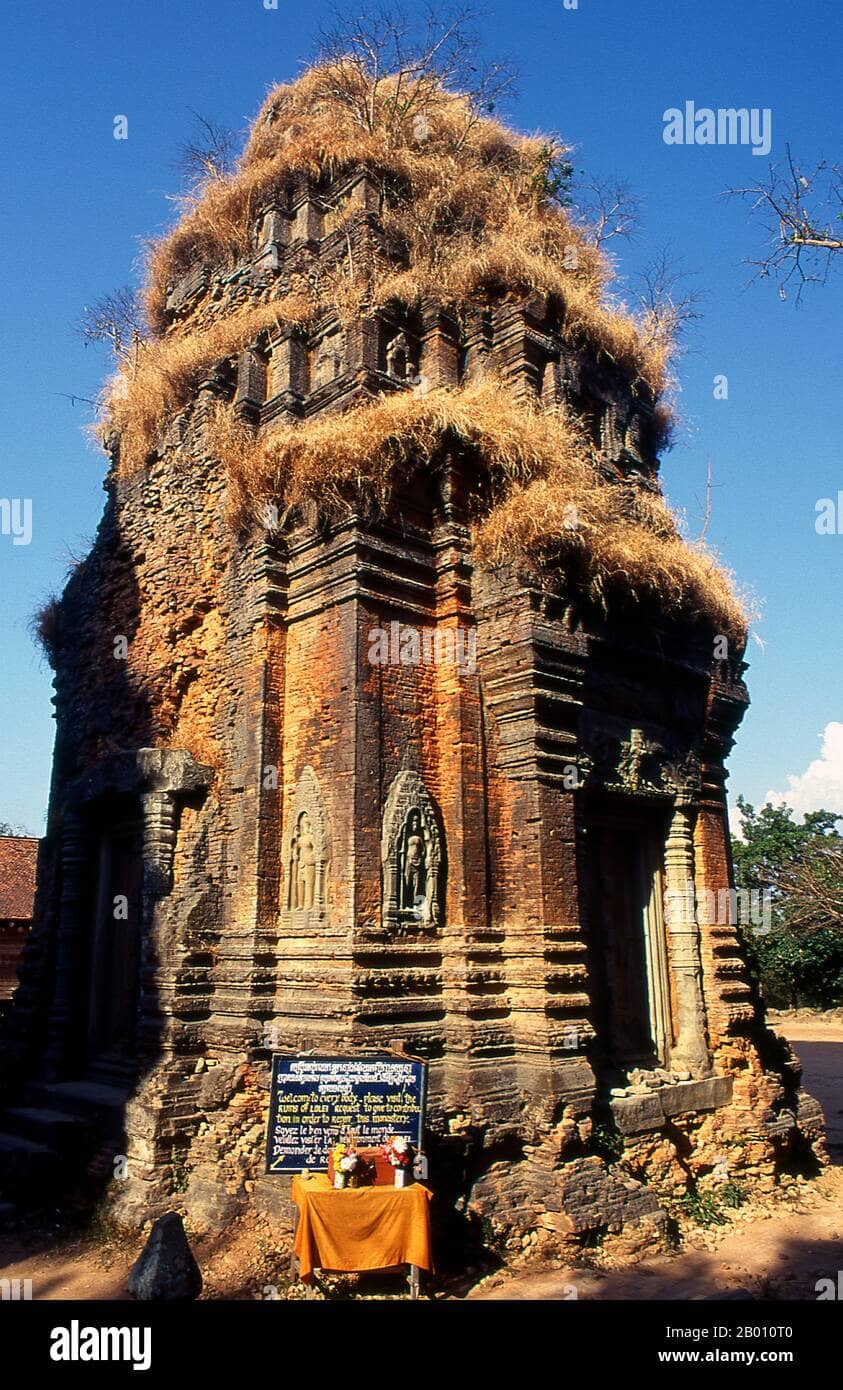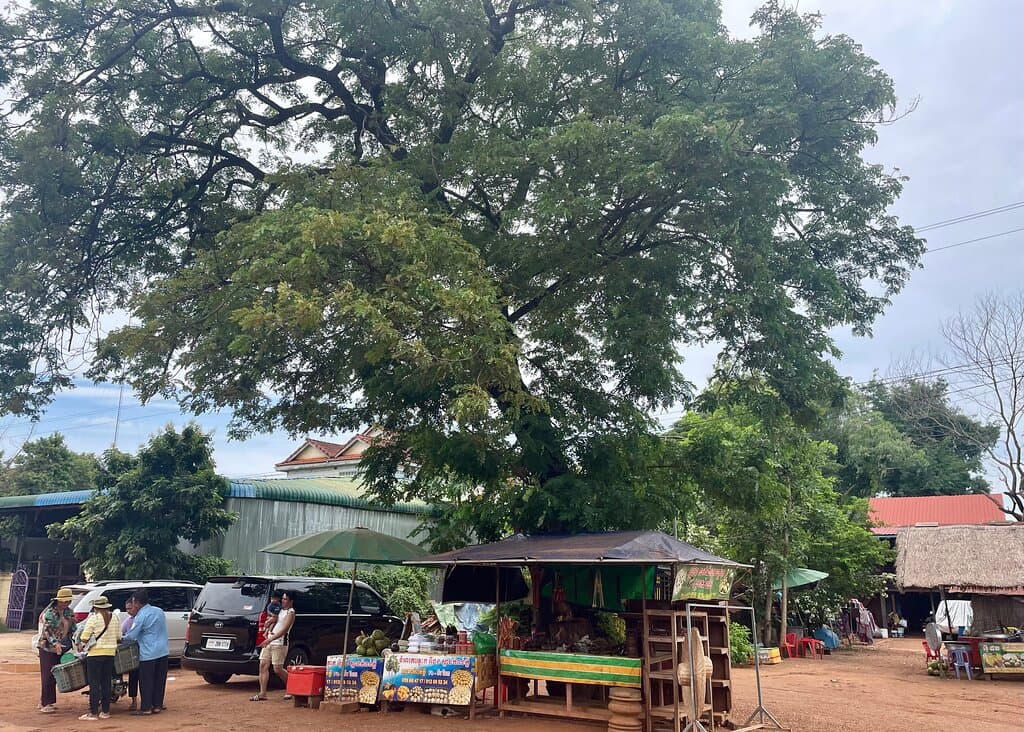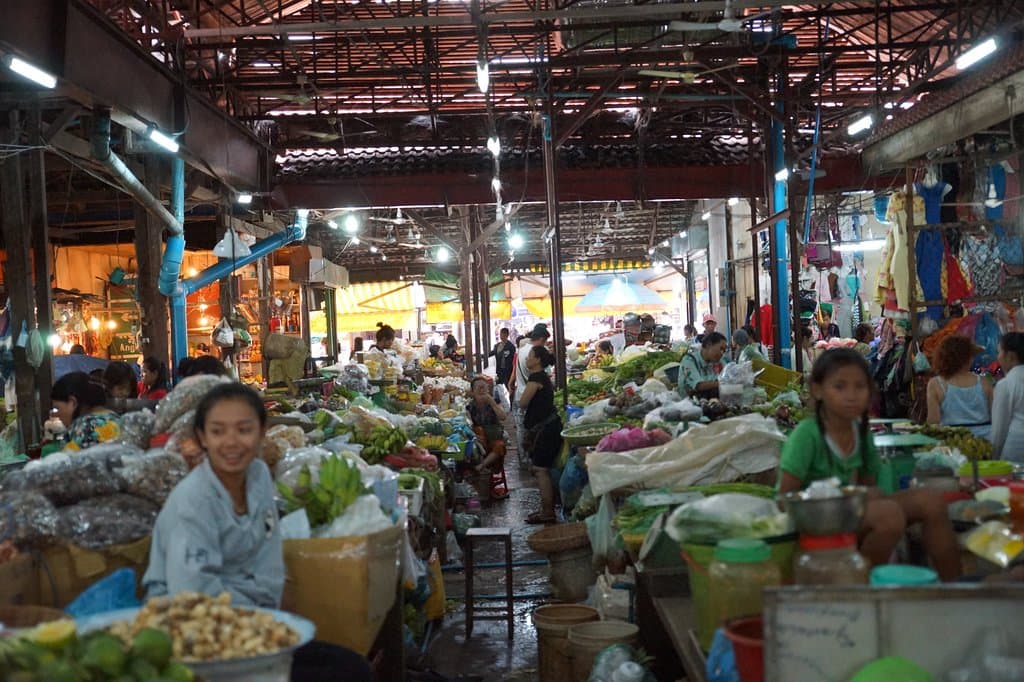Lolei
Lolei Temple: A serene island sanctuary, one of the earliest Khmer temples, offering a glimpse into the dawn of the Angkorian era and ancestor worship...

Highlights
Must-see attractions

Social
From TikTok & Reddit
Best Time
Beat the heat and crowds
Lolei
Best Time
Beat the heat and crowds

Highlights
Must-see attractions
Lolei Temple: A serene island sanctuary, one of the earliest Khmer temples, offering a glimpse into the dawn of the Angkorian era and ancestor worship.
"A peaceful, less-visited site offering a glimpse into pre-Angkorian history."
Combine with Roluos Group
Lolei is best visited with Bakong and Preah Ko for a full understanding of early Khmer architecture. :world_map:
Wear comfortable shoes
You'll be walking on uneven ground and exploring the temple complex. :athletic_shoe:
Highlights
Discover the most iconic attractions and experiences

The Four Brick Towers
Central platform
Marvel at the remaining brick towers, once a symbol of royal lineage and spiritual devotion. Early Khmer artistry is evident in their intricate carvings.

Indratataka Baray Remnants
Surrounding area
Visualize the vast ancient reservoir that once surrounded this island temple, showcasing impressive Khmer hydraulic engineering.

Ancestor Shrines
Within the towers
Understand the temple's original purpose as a memorial to King Yasovarman I's parents and grandparents.
Plans like a pro.
Thinks like you
Planning Your Visit
Timing is Key for Early Khmer History
Embrace the Quiet Contemplation
Best Times
Insider Tips
from TikTok, Instagram & Reddit
Combine with Roluos Group
Lolei is best visited with Bakong and Preah Ko for a full understanding of early Khmer architecture. :world_map:
Wear comfortable shoes
You'll be walking on uneven ground and exploring the temple complex. :athletic_shoe:
Beng Melea/Roulos/Koh Ker
Bring water and sunscreen
The Cambodian sun is intense, especially at temple sites. :hot_face:
Appreciate the quiet
Enjoy the serene atmosphere, a contrast to busier Angkor temples. :pray:
Tips
from all over the internet
Combine with Roluos Group
Lolei is best visited with Bakong and Preah Ko for a full understanding of early Khmer architecture. :world_map:
Wear comfortable shoes
You'll be walking on uneven ground and exploring the temple complex. :athletic_shoe:
Bring water and sunscreen
The Cambodian sun is intense, especially at temple sites. :hot_face:
Appreciate the quiet
Enjoy the serene atmosphere, a contrast to busier Angkor temples. :pray:
What Travellers Say
Reviews Summary
Lolei Temple is appreciated for its historical significance as an early Khmer site and its peaceful, less-crowded atmosphere. Visitors note its importance in understanding the foundations of the Angkorian civilization, though some find it less visually striking than other temples. The active monastery adds a unique cultural dimension.
"Located in the Roluos group of temples near Siem Reap, Lolei Temple is one of the earliest Hindu temples built during the Khmer Empire. Constructed in the late 9th century by King Yasovarman I, this temple was dedicated to Shiva and served as part of the ancient city of Hariharalaya, the empire’s capital before Angkor.
Historical Significance
Construction: Built in 893 AD, Lolei Temple was originally an island temple in the middle of the Indratataka Baray (a massive reservoir).
Architecture: Features four brick towers (only two remain fully intact) with intricate carvings and Sanskrit inscriptions.
Purpose: Dedicated to the king’s ancestors, with shrines honoring his royal lineage.
What to See Today
The temple’s sandstone lintels and decorative carvings showcase early Khmer artistry.
The surrounding ancient baray (now dried up) highlights Khmer engineering skills in water management.
A peaceful, less-visited site compared to Angkor Wat, offering a glimpse into pre-Angkorian history."
Blossoming Romduol
"Visiting Lolei Temple in Siem Reap felt like stepping into the early pulse of the Khmer Empire. Built in 893 AD by King Yasovarman I, this small yet significant temple is part of the Roluos Group, the cradle of Angkorian civilization. Located about 30 minutes east of Siem Reap, it once stood on an island in the Indratataka Baray, symbolically connecting it to Mount Meru, the mythical center of the universe in Hindu belief"
Hem Nimeith
"Part of the Rolous (រលួស) temples, constructed in the 9th century, and the early capital of the Khmer Empire before the construction of Angkor.
Lolei (ប្រាសាទលលៃ) has some beautiful architecture and engravings and also has a contemporary Theravada buddhist monastery at the site."
J Perkins
What People Like
What People Dislike
Frequently Asked Questions
🚇 🗺️ Getting There
Lolei Temple is located in the Roluos Group, about 13 kilometers southeast of Siem Reap. You can hire a tuk-tuk, taxi, or join a guided tour. The journey typically takes around 30 minutes. Many visitors combine a visit to Lolei with other temples in the Roluos Group like Bakong and Preah Ko.
Yes, Lolei Temple is part of the Roluos Group and is included in the standard Angkor Pass, which grants access to all temples within the Angkor Archaeological Park.
The Roluos Group, including Lolei, Bakong, and Preah Ko, is best explored by hiring a tuk-tuk for the day. This allows flexibility and easy transport between the sites.
🎫 🎫 Tickets & Entry
No, your Angkor Pass covers entry to Lolei Temple as it is part of the Roluos Group within the Angkor Archaeological Park.
Lolei Temple, like other temples in the Angkor Archaeological Park, is generally open from 5:00 AM to 6:00 PM daily.
The entrance fee is covered by the Angkor Pass. You will need to purchase an Angkor Pass to enter the archaeological park and visit Lolei.
🎫 🧭 Onsite Experience
At Lolei, you can see the remnants of four brick towers, intricate carvings on lintels and pilasters, and the surrounding dried-up Indratataka Baray. It offers a glimpse into early Khmer architecture and ancestor worship.
Lolei is a smaller temple. A visit typically takes about 15-30 minutes, but you might spend longer if you're deeply interested in its history or combining it with other Roluos temples.
Lolei is generally much less crowded than the main Angkor temples like Angkor Wat or Bayon, offering a more peaceful experience.
Basic facilities might be available near the Roluos Group sites, but it's advisable to use restrooms before or after your visit to Lolei, especially if you're on a tight schedule.
📸 📸 Photography
The best photo opportunities are the remaining brick towers, especially with the surrounding landscape. Early morning or late afternoon light can create beautiful shots.
Photography is generally allowed in the temple complex, but be respectful of any ongoing restoration work or religious activities.
For Different Travelers
Tailored advice for your travel style
👨👩👧 Families with Kids
Keep the visit brief and engaging by focusing on the 'story' of the temple – a son building it for his parents. Bring plenty of water and snacks, as facilities are limited. Consider combining it with a visit to Bakong, which has more imposing structures that might capture children's attention more readily.
🏛️ History Buffs & Archaeology Enthusiasts
Pay close attention to the surviving brickwork and carvings, which are indicative of early Khmer artistry. Understanding the symbolism of the island setting and the ancestor worship aspect will deepen your appreciation for this significant historical site. It's a place to contemplate the evolution of a civilization.
Deep Dives
In-depth insights and expert knowledge
The Dawn of Angkorian Civilization
Originally, Lolei featured four brick towers arranged on a platform, dedicated to King Yasovarman I's ancestors. This practice of ancestor worship was central to Khmer royalty and spiritual beliefs. While time and elements have weathered the structures, the surviving carvings on lintels and pilasters still offer a glimpse into the sophisticated artistry and religious narratives of the period. Visiting Lolei provides a unique perspective on the foundations of the Angkorian civilization, a stark contrast to the later, more monumental structures.
Today, Lolei is a peaceful site, often overlooked by tourists rushing to the main Angkor temples. This tranquility allows for a more intimate connection with history. The presence of a contemporary Theravada Buddhist monastery nearby also adds a layer of living culture to the ancient ruins, showcasing the continuity of spiritual practices in Cambodia.
Architectural Significance and Symbolism
The temple's placement on an artificial island within the Indratataka Baray was a deliberate act of symbolism. The vast reservoir, a feat of engineering, was intended to represent the cosmic ocean surrounding Mount Meru. By building Lolei at its center, King Yasovarman I elevated his ancestors to a divine realm, reinforcing their spiritual authority and his own legitimacy. The baray itself, named Indratataka after his father, underscores the filial piety that motivated the temple's construction.
While much of the original stucco and decorative elements have eroded, the surviving sandstone lintels and carvings are invaluable for understanding early Khmer art. These details often depict scenes from Hindu mythology, such as the Churning of the Ocean of Milk, further embedding the temple within a cosmological framework. The temple's relatively modest scale compared to later Angkorian marvels allows for a closer examination of these early artistic expressions.





Social
from TikTok, Instagram & Reddit